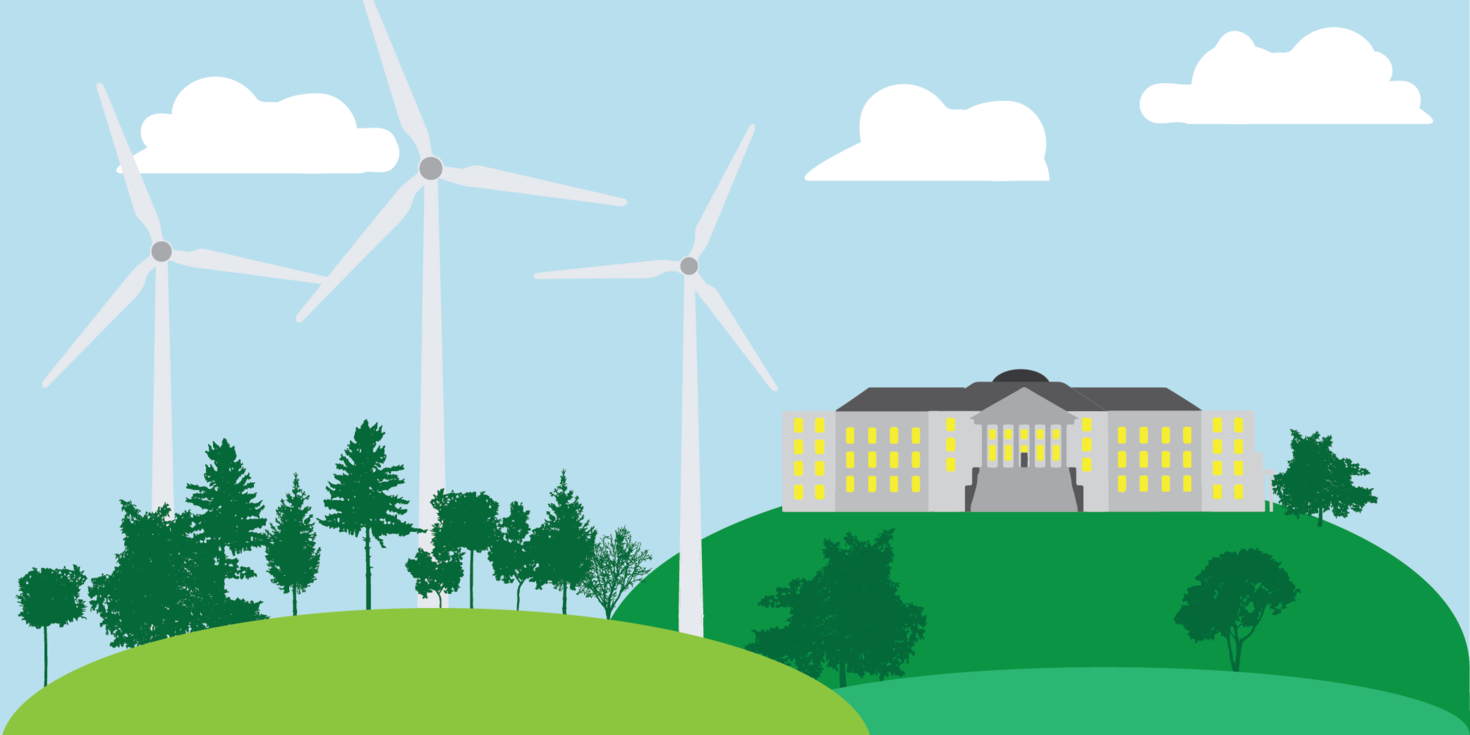Climate change is the name given to the phenomenon of the change in weather in a place; not the day to day weather, but the usual weather. For example, in Ottawa we expect the weather to be cold enough in the winter to freeze the Rideau Canal so that people can skate on it. The current consensus is that the global climate is warming, and this will lead to regional changes in weather, including extreme events such as tornadoes, flooding, and drought.
The largest human driver of climate change is carbon, specifically carbon dioxide (CO2), but it is not the only one. The greatest source of carbon emissions comes from heating buildings and creating energy. Then the next largest source is from the transportation of goods and people (travel and commuting). These numbers are also true for the University of Ottawa.
There are three types of emissions that are tracked.
- SCOPE 1: Direct emissions from combustion (ex. heating gas from the powerplant, gasoline in vehicles)
- SCOPE 2: Indirect emissions from purchased energy (ex. electricity from the grid or steam at Roger Guindon)
- SCOPE 3: Indirect emissions result from the University’s operations (ex. emissions from flights or from food production).
How does climate change impact uOttawa?
There are variety of ways that a changing climate impacts the University of Ottawa campus. Extreme weather can damage buildings and infrastructure, as well as prevent people from coming to campus. And as the weather in Ottawa heats up, it costs more money to cool buildings.
From an economic standpoint, there are financial penalties that the University must pay for emitting carbon. By the year 2030, those penalties are forecast to be over $3 million each year if we do not reduce our emissions.
What is uOttawa doing about it?
The University of Ottawa is addressing climate change in a variety of ways. Instead of just focusing on reducing emissions from one activity, the University has chosen to diversify its impact across various activities.
Emissions come from many sources:
- Buildings – The University has created guidelines to build new energy efficient buildings and renovate old buildings under the EcoProsperity program.
- Investments – The University has implemented programs to reduce the amount of carbon intensive companies it invests in.
- Research – The University of Ottawa has invested in a $1.5 Million Clean Innovation Research Fund designed to take international actions in the global fight against climate change.
- Transportation – The University supported the creation of the U-pass and operates various programs to discourage single vehicle transportation.
What you can do about climate change on campus?
Believe it or not, every small action adds up to big change. And it doesn’t always take a big dramatic program to have a meaningful impact; this can be done by changing a few habits.
- Turn off equipment before leaving the office. If you are the last person in the office, you can also turn off common equipment, like projectors, monitors, and photocopiers.
- When making trips to nearby locations for meetings or conferences, prioritize using the train instead of flying.
- Report heating issues and energy waste by contacting the call centre at extension 5000.
- When ordering food for a conference or event, work with Food Services to get food that has a smaller carbon footprint.
- Ask your supervisor if you can work from home on occasion. Fewer trips create less CO2 from commuting.
- Turn off lights that you aren’t using in meeting rooms, offices, or classrooms.
